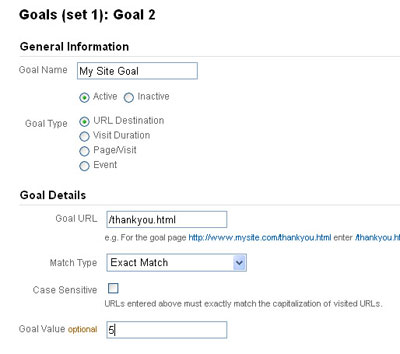 I’m a huge fan of Google Analytics – check my Twitter stream and you’ll likely find me singing the praises of a great new dashboard or the power of a custom variable. Setting up Google Analytics for small businesses is actually an easy process, especially on WordPress blogs like this site. This post will outline the steps to take to implement Google Analtyics for small business WordPress sites. I’ll also throw in some tips to measuring your site traffic properly.
I’m a huge fan of Google Analytics – check my Twitter stream and you’ll likely find me singing the praises of a great new dashboard or the power of a custom variable. Setting up Google Analytics for small businesses is actually an easy process, especially on WordPress blogs like this site. This post will outline the steps to take to implement Google Analtyics for small business WordPress sites. I’ll also throw in some tips to measuring your site traffic properly.
First, register for an account. This will give you the code you need to add to your site. Once your site is tagged properly you’ll start seeing data build within about 24 hours.
If you’re using WordPress, the implementation process is a breeze. There are several Google Analytics plugins that will automatically add your tracking code to all your pages. I’d recommend the Yoast Google Analtyics for WordPress Plugin.
Now that your pages are tagged you need to answer the questions – What is the purpose of this site? The answer is your primary goal that you’ll want to track in analytics. Form many sites, that’s a contact form submission. Usually, when a visitor completes a form, they are sent to a confirmation page – something like example.com/thankyou.html. In analtyics, you’ll need to assign a URL destination goal for each time someone arrives at /thankyou.html. Now, think of what that goal means to you in dollars. If you make one sale out of every 10 forms completed and your average sale/service price is $50, then each time your form is completed, that action is worth $5.00. Enter “5” into the goal value field. Like this:

What else can you track? Anything really. For small businesses, I’d recommend a few custom segments to help organize their data. First, understanding the difference between branded and un-branded search terms. Branded terms are keywords that contain your brand name, including things like misspellings, terms like the name of a president or founder, and perhaps even a unique product name. An advanced segment in Google Analytics allows you to group these visitors into buckets to anlayze how they interact with your website. Your branded segment are visitors who know your company already, and will likely be one of your highest converting groups. Those non-branded visitors are vitally important. These are visits from people searching for your services or great blog content. They’re actively seeking out your products. Optimizing your site so that these visitor have an easy path to converting is a major win for your online marketing efforts.
Depending on your industry, your social media marketing efforts might not produce enough visitors to warrant a deep-dive analysis on each social channel. I usually bucket all these social media visitors into one social media segment. Using another custom segment to include Twitter, Facebook, Pinterest, Google+ and any second tier social channels gives you a clean view of your social media traffic. Analyzing how these visitor convert to sales really is fascinating. And guess what – if you get to this level you’ve just started the process of measuring your social media ROI. I’ve got more tips and tricks on putting an exact dollar figure on social media marketing efforts, but that’ll have to wait for another post.

Leave a Reply